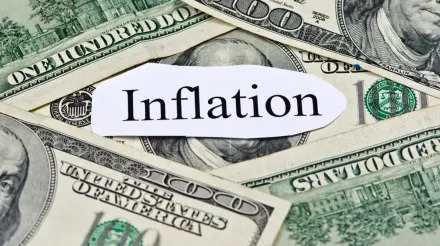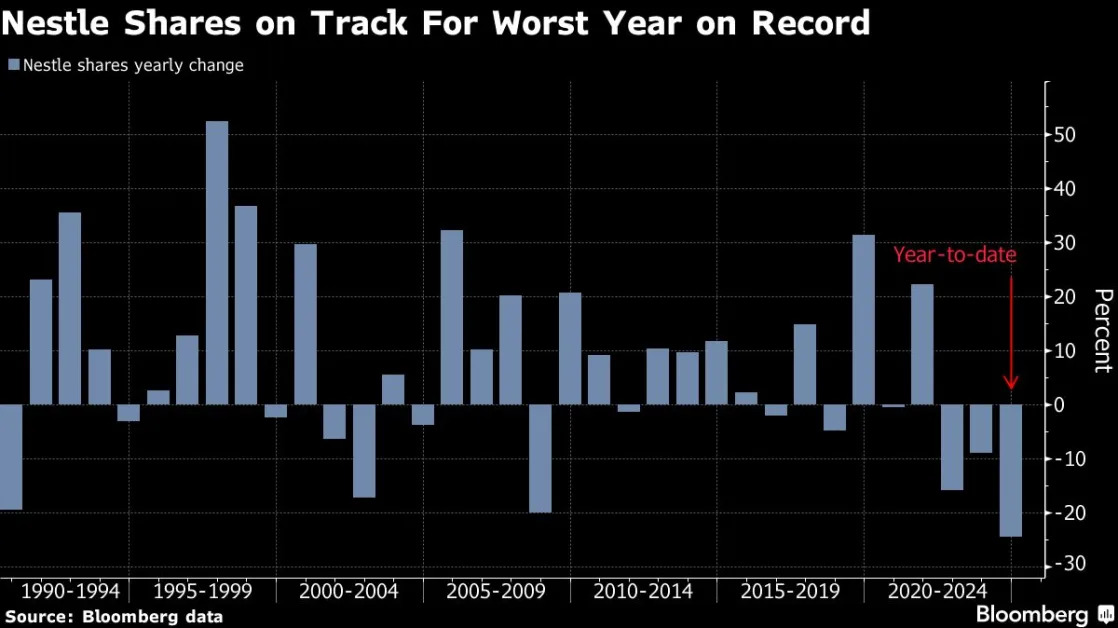
Michael Saylor is the Executive Chairman at MicroStrategy (NASDAQ: MSTR) , a company that specializes in business intelligence software. However, MicroStrategy is better known as the first public company to adopt Bitcoin (CRYPTO: BTC) as its primary treasury reserve asset, and it recently rebranded itself as a "Bitcoin development company."
MicroStrategy owned 226,500 BTC as of July 31, currently worth more than $13 billion. So, buying shares of MicroStrategy stock is tantamount to buying Bitcoin. The company has a market capitalization of $25 billion, and a substantial portion of that value is derived from its Bitcoin holdings.
Saylor recently delivered a keynote speech at a Bitcoin conference in Nashville, Tennessee, during which he shared his 20-year outlook:
"What do I think will happen? Well, I've got a bear case and a bull case. But what I think will happen is that 55% [compound annual growth rate in Bitcoin] goes to 50%, 45%, 35%, 30%, 25%, 20%. It's between 50% and 20%. It will gradually decelerate until it's growing about twice as fast as the S&P 500 index. And at that rate, Bitcoin's $13 million a coin in the year 2045. $13 million! It could be a $3 million bear case and a $49 million bull case."
Bitcoin currently trades at $58,000 per coin. So, Saylor expects the cryptocurrency to return between 5,170% and 84,380% by 2045. Here's what investors should know.
Spot Bitcoin ETFs could unlock substantial demand for Bitcoin
The investment thesis for Bitcoin is simple supply and demand. Bitcoin supply is limited to 21 million coins, so demand is the most consequential variable. In other words, Bitcoin will become increasingly valuable provided demand continues to trend upward over time. And Michael Saylor believes the recent approval of spot Bitcoin ETFs will boost demand by bringing more investors to the market.
"There's 10 years of pent up demand. People have been waiting for these ETFs, and finally mainstream investors are able to access Bitcoin," Saylor told CNBC in February. "The asset has found its footing, and now people are beginning to realize that there's 10 times as much demand for Bitcoin coming in through these ETFs as there is supply coming from the natural sellers, who are the miners."
Traditionally, investors have needed to go through cryptocurrency exchanges to get Bitcoin exposure, and they generally incurred high fees for each transaction. But spot Bitcoin ETFs could unlock substantial demand from retail and institutional investors by reducing that friction. Investors no longer need a separate account with a cryptocurrency exchange, but rather can add Bitcoin to existing brokerage accounts.
Additionally, investors no longer need to pay exorbitant transaction fees because many spot Bitcoin ETFs are less expensive. For instance, the iShares Bitcoin Trust carries an expense ratio of 0.25%, meaning the annual fees on a $10,000 portfolio will total $25. But Coinbase charges 0.4% to 0.6% per transaction for orders under $10,000. In that scenario, investors get hit with higher fees twice: once when they buy, and again when they sell.
Spot Bitcoin ETFs broke all sorts of records following their approval in January. The iShares Bitcoin Trust and Wise Origin Bitcoin Trust accumulated more assets during their first 50 trading days than any ETF in history, according to Eric Balchunas at Bloomberg Intelligence. Additionally, the iShares Bitcoin Trust hit $10 billion in assets faster than any ETF in history, according to The Wall Street Journal.
History says Bitcoin will be worth more in four years
Bitcoin halving events refer to the 50% reduction in block subsidies that happens about once every four years. To elaborate, miners are rewarded with newly minted Bitcoin (called block subsidies) when they solve the cryptographic puzzle required to validate a group of transactions (called a block). But the payout is cut in half every time 210,000 blocks are added to the blockchain, which takes about four years.
The most recent halving event occurred in April 2024, when the block subsidy was reduced from 6.25 BTC to 3.125 BTC. Halving events are important for two reasons. First, they are the mechanism by which Bitcoin's 21-million-coin supply limit is enforced. Second, they reduce selling pressure simply because miners are minting less Bitcoin, so they have less Bitcoin to sell.
Importantly, Bitcoin has always increased in value between one halving event and the next, as detailed in the chart below.
|
Bitcoin Halving |
Price At Halving |
Price At Next Halving |
Return |
|---|---|---|---|
|
November 2012 |
$12 |
$647 |
5,291% |
|
July 2016 |
$647 |
$8,821 |
1,263% |
|
May 2020 |
$8,821 |
$63,462 |
619% |
Data source: Morgan Stanley, YCharts.
In short, history says Bitcoin will be worth more than $63,462 when the 2028 halving event rolls around. In the past, the return between halving events has gotten smaller with each subsequent event, but access to spot Bitcoin ETFs could break that pattern, simply because that variable was absent from previous halving events. In other words, Bitcoin could theoretically return more than 619% by the 2028 halving event.
Saylor's targets range from wildly optimistic to absurd, but investors should still consider buying Bitcoin
Time for a reality check. Saylor's bear case price target of $3 million is wildly optimistic, and his bull case price target of $49 million seems downright absurd. But I would have said the same thing about a $58,000 price target in 2010 (back when Bitcoin traded at less than $1). Lo and behold, nearly 15 years later, Bitcoin is worth $58,000. So I would have been wrong.
That does not mean Bitcoin is headed to $3 million (or $49 million). But Bitcoin clearly has the capacity to create substantial wealth, so patient investors comfortable with volatility should consider owning a small position. Even if Bitcoin returns a mere 100% in the coming years, that could be a significant chunk of change.
However, comfort with volatility is key. Bitcoin has declined more than 50% on several occasions and similar drawdowns are probable in the future. Moreover, smaller drawdowns are commonplace. For instance, the cryptocurrency currently trades 20% below its record high. Anyone not bothered by that information should consider buying a small position in Bitcoin today, either directly or through a spot Bitcoin ETF.
Before you buy stock in Bitcoin, consider this:





